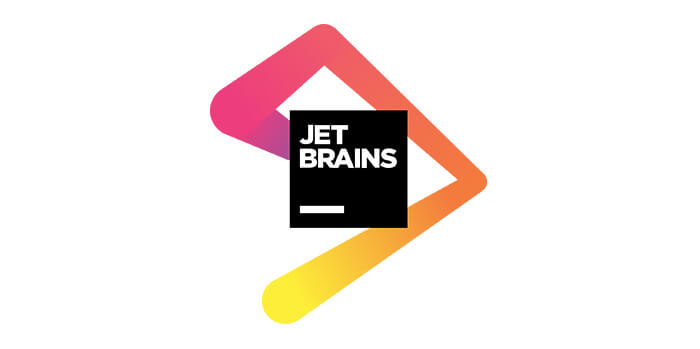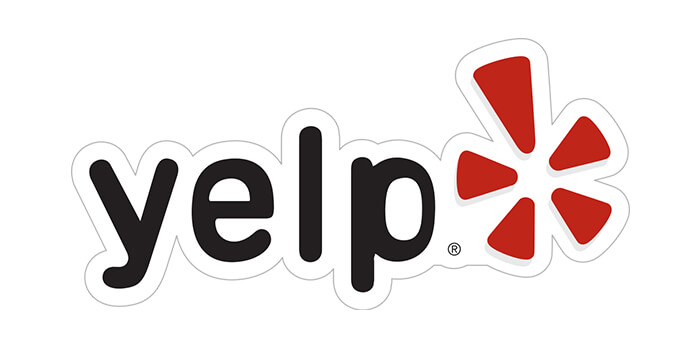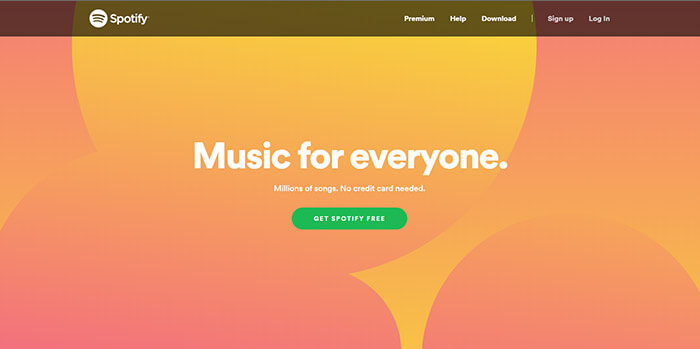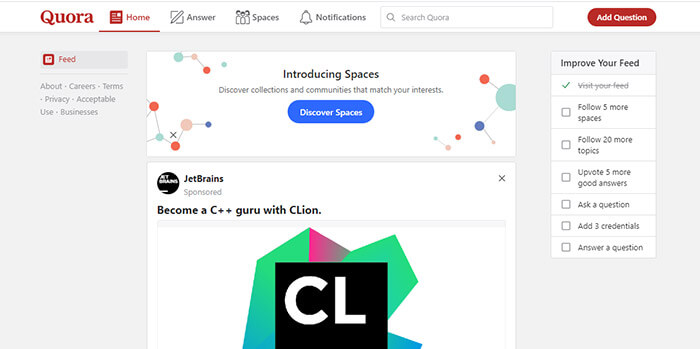Why is Python a great programming language for giants like Google, Facebook etc.?
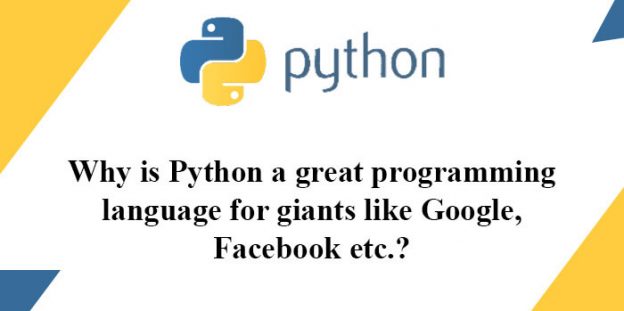
Python is an object-oriented high-level programming language which is built-in data structures blended with dynamic typing and binding; heavily used for application development. It was designed by Guido van Rossum in 1991 and developed by Python Software Foundation. The developers laid core emphasis on code readability while its creation. It is a programming language that can bring a pace to your boring development process. Its syntax allows coders to implement concepts in few lines of codes. Its versatile, portable, modular, and many such amazing things come together to make it a top preference for biggies in the industry such as Google, Facebook, Instagram, Stack Overflow, Ubuntu, etc.
If you are one of those coming up with a start-up, everything will be time-consuming for you till you get inflow. You have to plan. You have to decide the scope. A fully-fledged feature list is what you have designed. Many things would cross your mind like development, security, cost, designing, etc. At the same time, choosing the best technology becomes an overlooked part.
For all the insecurities you have in your mind, Python is the solution. It’s an old, established and prominent platform which does not only come with a capability to update in the future but also efficient in interacting with other languages. Python assists businesses to develop a variety of data models. Businesses often consider Python as one of the most dynamic languages out there. We agree that there has been a great emergence of new technologies, still, Python holds a separate space. We have a lot of languages in our access, but Python is versatile which is why it is preferred by a number of developers.
In this article, we are going to mention the benefits and factors related to choosing Python as a programming language for your next application.
Statistics related to the usage of Python:
Python Software Foundation with JetBrains conducted an annual Python Developers Survey in the fall of 2018 according to which “84% of Python users in our survey use Python as their main language, while for 16% it’s their secondary language. In 2017 we had a slightly different distribution: 79% specified they used Python as a primary language and 21% as secondary.”
Further study has shown the sharing of usage in terms of application types. For example, “Worth noting is that Data analysis has become more popular than Web development, growing from 50% in 2017 to 58% in 2018. Machine learning also grew by 7 percentage points. These types of development are experiencing faster growth than Web development, which has only increased by 2 percentage points when compared to the previous year.”
Further results depict that Python is mostly used for website development followed by data analysis and machine learning. The other applications include software prototyping, desktop development, educational purposes, development of crawlers, game development, mobile app development, etc.
You will be amazed to know that most of the biggies existing in the market use Python either as their primary or secondary language. Stackoverflow.com, Digg.com, Ubuntu.com, Wish.com are some rich examples.
According to BuiltWith, around 974112 websites are based on the Python programming language. Python has been existing in the market for 29 years and still comes in the top 10 most used languages.
According to Statista, Python is the most popular language worldwide followed by Java. There are some features that make Python a good suit for most of the development requirements like its versatility, portable, modular, syntax, memory management, etc.
Reasons why businesses prefer Python
Python is a modular as well as versatile language which makes it a good suit for enterprises. Here are some of the reasons why is it preferred.
1. Cost-effective: It is good for organizations with a limited budget as it allows quick development. You can choose it for bigger projects as they need a lot of time to get completed. Now that the development is fast, there can be a good amount of reduction in cost.
2. IoT friendly: It is an IoT era we are living in. Slowly, IoT is replacing our traditional systems with its application in almost all domains. Be it healthcare, construction, or any other arena, the Internet of Thing is clearly seen winning. This emergence also opened doors to opportunities for Python developers. Raspberry Pi and more such platforms allow developers to build their own devices, for example, phones, cameras, radios, etc. The cost-effectiveness and IoT-friendly nature of Python have made it an apt language for modern applications. The developers can connect applications with the real world through Python. It is a go-to language for the coding freaks who do not like to use readymade modules or frameworks.
3. Productive: Python is a highly productive programming language that offers object-oriented designs, a unit testing framework, and at the same time, the best process control capabilities. Features like these make the development process faster and your overall productivity increases since you can carry out stress-free coding. A python is a good option if you want to get a complex network app created. It is good at dealing with complexities and giving no headache to the developers.
4. Free: Python is free for use. The associated modules, libraries, and tools are free to use. In comparison with other programming languages, you will find a lot of useful things for free when you use Python.
5. Scalable: With Python, you can easily create scalable solutions which means if you want to create a basic app right now, you are free to do that using Python and in the future, you can enhance it easily. Python comes up with such a relaxation which is useful for almost all kinds of businesses. Every online business aspires to grow with time for which it has to bring certain changes or advancements to its model. If your system is made up of a module that restricts you from making changes then the only option, you have is to develop an entirely new application from scratch. Python has reversed the case. Applications created using Python can be scaled later.
6. Versatile: Python is versatile and innovative in nature which is why not only the newcomers but also biggies like Facebook, Instagram, and Google are relying on it. Python is capable of working well with other languages as well which becomes another reason for its high preference.
7. Robust: An online system has to be robust enough to face challenges and shortcomings. Python gives you such an environment through which you can create robust applications capable of overcoming challenges.
8. Open source community: It is not a support community just for the name, but it is actually huge and supportive. Programmers in a count of millions dedicatedly work to bring improvement and innovations in the system. This community can be accessed to seek any kind of challenge faced in between the development.
9. Blue chip sites: Python is used by many blue-chip sites due to its efficiency to scale up. If you are a Python developer, then there is no way you can ever fall short of jobs. We have huge platforms running on Python like YouTube, Instagram, Yelp, Paypal, etc.
10. Third-party modules: As we have already mentioned, Python is capable of interacting with other languages and modules as well. PyPI is a Python package that facilitate you doing so.
Python is an old name and is generally associated with traditional developers whereas deep inside we all know its significance and eminence. It is one of the eldest languages that has not yet lost its place. Its features are still commendable and difficult to overlook. This is the reason why most of the big platforms have Python as their base language. The abilities of Python have not yet come to an end. Let’s have a look at its real-life application.
Which of the big firms in the industry use Python?
1. Google: Python is recognized as an official language at Google since it has been a part of it from the very beginning alongside C++ and Java. Most of the Googlers support the programming language and hence frame a big part of the community. A lot of internal Google systems run on Python due to its versatile nature. Google is a vast case. You might be wondering what parts of Google exactly use Python!
Google app engine is one of the greatest examples of Python’s application. It is used for application building using the Python programming language. Next up we have YouTube which is another eminent user of the programming language. It used python for various functions like view videos, administer videos, control templates, gaining access to canonical data, etc.
Then, it is used on code.google.com which is Google’s dedicated site for developers.
It is also used in Google’s open-source libraries- Google data Python client library and Google Adwords API Python client library.
Apart from this, programmers at Google build systems like report generator, log analyzer, and more using Python.
2. Facebook: Python is highly preferred by production engineers at Facebook. After C++ and PHP, it is the third most eminent language used by the social media giant. Not all the coding is done over Python for Facebook development but yes, few lines of code are written in Python. Python is used by most of the product engineers at Facebook to build libraries and binaries. 21% of the Facebook codebase infrastructure is made up of Python and the rest is developed on Java, C, and C++ with 9%, 15%, and 55% involvement respectively. Python is also responsible for running various services on Facebook such as Network switch set up and scaling, service turn-up, scheduling maintenance work, etc.
3. Instagram: Instagram is a Python-based photo and video sharing application. It currently has the largest deployment of the Django framework which is completely written in Python. A software engineer at Instagram said, “Initially we chose to use Python as a language owing to its reputation for practicality and simplicity, which well aligns with Instagram’s philosophy, i.e. to do simple things first.” From that time only, Instagram’s development team has spent its time and engaged its resources to make Python deployment possible for the massive scale they work on.
4. Spotify: Spotify is one of the renowned music streaming applications which uses Python for data analysis and backend services. Most of the services on its backend are written using ZeroMQ which is a framework and open source library majorly written in Python. Next, Python is used for data analytics which is required for platforms like Spotify where you have to come up with the recommendations as per user’s preferences and other factors, basically to introduce personalization. Spotify makes a rich usage of Luigi that is a module based on Python. It is used along with Hadoop that is an open-source module.
5. Quora: Quora is a platform on which users can raise questions related to different genres and other users can answer depending upon their opinions and outlook towards that particular problem. As it is based on a great model, there was a big thought given over the technologies to be used by the creators. The final list of technologies included C++, Python, Scala, and Java. The founders analyzed some lacking factors following a standalone choice among these four. Finally, it was decided to follow Google and use Python whenever ease of writing & readability was required. On the other hand, C++ was implemented for performance-related critical sessions.
Python’s use is not just restricted to all these platforms. It has come a long way and even now, its radiance and potential never disappoint the developers or innovators. The buzzword in the market Netflix is also building with Python imparting incredible features of extensibility, scalability, etc.
There is literally a ton of Python libraries that facilitate easy and quick development which is why it is a prime choice of traditional as well as modern developers. Python is a multi-purpose language and even used for 3D CAD etc.
Let us have a close look at the major applications of Python.
1. Web development: With Python, you can develop web applications much easier than thought. It has loads of libraries for internet protocols such as XML, HTML, JSON, FTP, and more. There are some of the frameworks available for the developers, for example, Django and Pyramid. Then, there are microframeworks as well such as bottles and flask. CGI scripts can also be written in Python. With Python, you get advanced content management systems as Django CMS and Plone.
2. Database access: You have access to custom and ODBC interfaces to MySQL, Oracle, PostgreSQL, MS SQL Server, etc. using Python. What’s more exciting is that these are freely available to download. Object databases such as Durus and ZODB add to the advantages further.
3. Games and 3D graphics: Python is also used for game development. Frameworks such as PyGame and PyKyra are offered to perform various operations of game development. A variety of 3D-rendering libraries are also there to pace up the development process.
4. Network programming: Python provides great support to perform low-level network programming. Twisted Python is a framework used for asynchronous network programming. Additionally, it is seen offering an easy-to-use socket interface which makes the overall experience further assisting.
5. Software development: Python can be used as a support language for the software development purpose. It can be used for build control, management, testing, and many other things.
i. SCons is available for build-control
ii. Buildbot and Apache Gump are there for automated and continuous compilation along with testing
iii. Roundup, Trac is there for project management as well as bug-tracking
iv. Roster of Integrated Development Environments
6. Numeric applications: Python has all the potential to maintain a significant space in the scientific community. SciPy offers a whole lot of packages used for mathematics, engineering, and science applications. Pandas is there for data analysis and data modeling library. NumPy has been provided to deal with complex numeric data.
Other applications include Audio/ Video-based Applications, 3D CAD Applications, Applications for Image, Enterprise Applications, and more.
Out of all the benefits and features mentioned above, Python, like any other programming language, has its own drawbacks. Some of the built-in features are definitely lacking in the case of Python which is provided by other modern programming languages. Therefore, if you choose Python, you have to use Python modules, libraries, and frameworks so as to accelerate the custom software development process.
Moreover, Python is an easy-to-use and accessible language for beginners. There is a huge community to brings way-outs for your concerns as well as support your innovations. One of the most amazing benefits of Python is that it is scalable. At this point in time, a system has to update itself regularly in order to be in line with the approaching advancements. Python allows you to customize your application in the future as per the requirements. Python is everywhere!
Here’s one piece of evidence,
The IEEE ranked Python as the #1 programming language in 2018 after ranking as the #1 language in 2017 and #3 top programming language in 2016. RedMonk’s June 2017 ranking, had Python at #3, which was up one slot from their same ranking two years earlier.
Python is a go-to language to accomplish various kinds of application requirements.
Thinking to choose Python for your next project? Feel free to write us to get more information.
